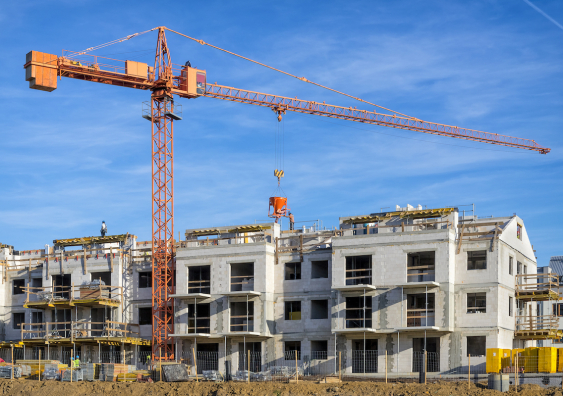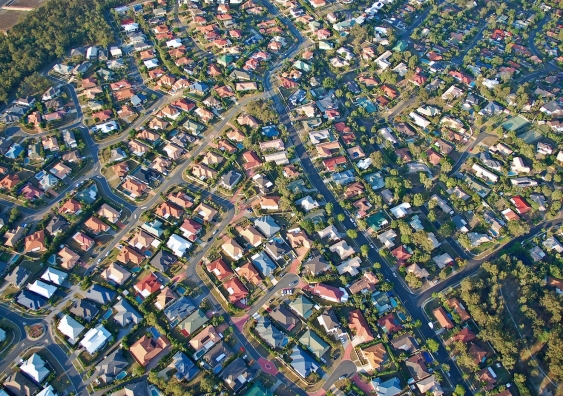Sharp housing cost increases are causing more financial strain for people in the Sunshine State.
Queensland’s housing and homeless crisis continues to spiral out of control, but the State Government’s housing plan offers new hope for tackling the challenge, new research says.
The report, led by Â鶹Éçmadou Sydney Professor Hal Pawson and the at Â鶹Éçmadou Arts, Design & Architecture, found increased house prices and new tenancy rents in Queensland have outpaced the rest of Australia since the start of the pandemic.
Brisbane property prices have increased by 65 per cent since 2020, almost double the Australian capital city average (34 per cent). Across the state, new tenancy rents also climbed faster than across the nation, rising by 45 per cent over the same period.
Since 2020, the number of new lettings at rents affordable to low-income households in the state has fallen from 23 per cent to just 10 per cent of all private tenancies. In March this year, less than one per cent of all available rentals were affordable to a single person earning minimum wage.
Media enquiries
For enquiries about this story and interview requests, please contact Ben Knight, News & Content Coordinator, Â鶹Éçmadou Arts, Design & Architecture.
±Ęłó´Ç˛Ô±đ:Ěý(02) 9065 4915
·ˇłľ˛ąľ±±ô:Ěýb.knight@unsw.edu.au
And this is only the latest twist in a longer-term trend, which has seen Brisbane’s shortage of private rental homes affordable to low-income tenants increasing from 19,000 in 2006 to 37,000 in 2021.
“With the market in its current state, it is renters and recent first home buyers who are going to be at the sharp end,” Prof Pawson said.
“Unfortunately for some, the conditions can mean being pushed into homelessness.”
The number of Queenslanders depending on homelessness services has also grown by 34 per cent in the last five years, with more families seeking emergency help to survive. For some, this means living in tents and cars or being stuck in motel rooms due to the shortage of affordable rental homes.
In response to the report, QCOSS has renewed its call for State and Federal Governments to do more to fix the housing crisis.
At the state level, QCOSS wants both parties to commit to long-term, evidence-based plans, including increasing the supply of social and affordable housing across the state. They said rent increases must also be capped, legal loopholes need to be closed to prevent unfair evictions, and rental property energy efficiency standards must be implemented to protect vulnerable renters.
Unfortunately for some, the conditions can mean being pushed into homelessness.
Increasing investment in social housing
The report also evaluated the State Government’s 2024 “Â鶹Éçmadous for Queenslanders” housing plan. It found that the strategy to fast-track 900,000 new homes, including over 2000 social dwellings annually through 2046, could alleviate housing pressures in the coming years.
QCOSS CEO Aimee McVeigh commended the government’s commitment to an ambitious long-term plan to end the housing crisis.
“While Queensland’s housing crisis continues, the Queensland Government has broken new ground by committing to a nation-leading housing plan that will start to make a significant difference in coming years if properly implemented,” Ms McVeigh said.
Prof. Pawson said solving Queensland’s housing crisis requires both ambitious targets and a firm commitment to hitting them.
“Both in the range of housing issues it covers and in its inclusion of defined targets in key areas, the Â鶹Éçmadous for Queenslanders plan has strategic breadth and substance that are unusual in similar plans published by other states,” said Prof. Pawson.
“While it includes a suite of measures aimed at amplifying market housebuilding, the plan importantly acknowledges that a far wider range of reforms is needed to effectively address the pressured state of the system and the unsatisfactory housing situation that too many Queenslanders are currently facing.
“The stand-out commitment is the pledge to expand social housing stock by 73 per cent by 2046, and the funded commitment to boost social housebuilding by the required amount to be on track for this over the next three years.”
Ms McVeigh also called on the State Opposition to release its long-term plan to end the housing crisis in Queensland.
“The State Opposition must commit to at least the same social housing plan targets as the Queensland Government and funding increases for specialist homelessness services,” Ms McVeigh said. “Otherwise, a change in government could significantly jeopardise an opportunity to end Queensland’s housing crisis.”








